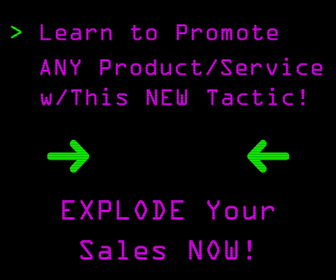 Starting or running an e-commerce business takes a lot of time and effort. Making sure it succeeds is even more challenging. In a very competitive world of marketing, it’s imperative to overcome challenges and rely on strategies that will increase a website’s profit potential. Online retailers know it’s difficult to drive a lot of traffic to their site. Growing sales can also get difficult in a crowded e-commerce space online. To help companies figure out which practices can produce a thriving e-commerce business, we’ve outlined some of the best techniques. Join us for our next free webinar training to learn more tips on how to make an online website succeed and bring in an ample amount of money.
Starting or running an e-commerce business takes a lot of time and effort. Making sure it succeeds is even more challenging. In a very competitive world of marketing, it’s imperative to overcome challenges and rely on strategies that will increase a website’s profit potential. Online retailers know it’s difficult to drive a lot of traffic to their site. Growing sales can also get difficult in a crowded e-commerce space online. To help companies figure out which practices can produce a thriving e-commerce business, we’ve outlined some of the best techniques. Join us for our next free webinar training to learn more tips on how to make an online website succeed and bring in an ample amount of money.
Reveal Customer Interests
You want to know what your customers are thinking, and Google can assist with this. Marketing Land reveals how you can use Google Analytics to your advantage and figure out the most helpful consumer details.
Prospects have a wide range of needs, desires and interests that they research, analyze and fulfill online.
Google can help you figure out what those interests are so that you can better serve your customer’s needs and desires.
While it’s important to understand demographic information like your audience’s age range, gender split, location and so forth, Google Analytics helps e-commerce merchants drill down into consumer details with its Affinity Categories report.
This report details, “…lifestyles similar to TV audiences, for example, Technophiles, Sports Fans, and Cooking Enthusiasts.” Moreover, the In-Market Segments report discloses product-purchase interests.
These bits of information are invaluable for e-commerce purveyors as it helps to uncover what consumer categories are products your audience is interested in – crucial to increasing sales.
The utilization of this data can help your brand more closely align with the things that are valuable and noteworthy to your users, while also serving to generate superior content marketing efforts that can improve your site’s search rankings, backlink profile and repeat patronage.
Clever Product Descriptions
Customers don’t only look at the pictures on your ecommerce site. They also read the description. Since they tend to read everything it’s vital you have compelling and accurate product descriptions. Let’s see what Adwords Robot has to say about that:
So how do you make product descriptions that make the sale?
First, think of it as writing to one person who completely embodies the buyer’s persona.
What are this person’s hobbies? What are their interests?
These are some of the questions that you should answer to know the tone of writing that you should use. Should you be funny and conversational or should you be business-like and direct? This will depend on what your buyer finds engaging. MailChimp has come up with a guide on using the right voice and tone depending on your users’ needs.
Next, focus on the format. Research suggests that users only scan words on websites and rarely reads the entire page content. This means that you should make your product descriptions easy to read. Use subheadings, bullet points, large, readable fonts, and lots of white, uncluttered space that will make reading a breeze.
Product Photos
Since we just brought up product descriptions (and briefly touched on photos), let’s take a look at what Adwords Robot says about pictures. Taking excellent pictures and effectively tying them in with your product descriptions is equally as important!
You may have the best product in the industry but if the photos suck, there’s a huge chance you won’t make it in e-commerce. Online shoppers rely on the website photos for a sample of what they will be buying. Make these photos as enticing as you can but remember to always keep it real.
For starters, we’ve shared 30+ ways that you can do to improve on product photography. All you need is a decent camera (or you can use phone), a tripod, a white background, and a room filled with natural light. Once you have your raw images ready, transfer it to a computer and retouch with photo editing software such as Adobe Lightroom.
Have some extra budget? Hire a professional and invest on product photography.
Mobile-Oriented Website
Does your website display well on mobile? If you want to keep customers around it’s imperative to make sure your website design and pages display well on mobile phone. You should also click on links and make sure everything is fully functional and is easy to find. Search Engine Journal reveals more below:
According to the data provided by SEMrush, desktop leads mobile in organic search traffic by approximately 14 percent, accounting for 56.98 percent of total e-commerce traffic.
These numbers can be explained by the fact that shoppers still prefer to collect detailed information about products and services on their desktop computers.
Therefore, website owners need to maintain a solid presence in a desktop market. Be sure to build your e-commerce website as a knowledge base for your customers who are interested in learning more about your business and your niche.
However, in the times of global “mobilization,” it’s more important than ever to keep up with today’s realities and searchers’ requirements. Google aims at improving the user experience as much as possible, and thus continues the shift toward mobile-first indexing.
To take advantage of the changes that happen in the industry, website owners should pay attention to what Google encourages them to do and prepare for the mobile-first shift. This is particularly the case with electronics, where mobile organic search traffic is the strongest (44.78 percent of total organic traffic in the electronics industry), compared to other categories.
But don’t jump on the mobile bandwagon just for the sake of it. According to Google, if you only have a desktop site, the search engine will continue to index it as always.
A good desktop-oriented website is better than a poorly performing or broken mobile site. Be sure to build the mobile version of your site properly and roll it out when it’s ready.
Take Your Industry Into Account
You must always keep your industry in mind. As your company grows and changes, so will the industry. Stay up to date on trends and what your customers purchase the most. You will need to make changes here and there, and Search Engine Optimization also says you should regularly check in with changing product lines so customers can stay up to date on all of your latest changes.
While some techniques are applicable for any e-commerce business, when planning your strategy it’s crucial to take into account the specificity of your industry.
For example, what works well for electronics might not work the same way for jewelry.
Different companies spend different budgets on marketing and advertising, which influence their strategies.
Generally, businesses with regularly changing product lines tend to spend more on advertising, because they need to inform their customers about product updates on a regular basis.
The same is true for companies that work in highly competitive industries. On the other hand, brands without regular new product launches only need to remind their audience periodically about their special offers.
Of all the niches, the clothing industry invests most heavily in paid advertising: online clothing stores spend 37 percent of their total ad budget on ads (in the $50,000+ range).
Online clothing brands also claim the highest ad spend within the $10,000 to $50,000 range, accounting for 44 percent of their total advertising investment. Meanwhile, online music and book stores spend 84 percent and 75 percent, respectively, of their total ad spend (in the $1,000 or less range).
You can also check data on the amount spent on AdWords among all 13 e-commerce industries in the full version of the research.
Integrate Instagram
Shopify reminds e-commerce business owners to not forget about social media and more specifically, Instagram. Instagram continues to grow, and you should grow along with it. It’ll only help your business improve.
With over 500 million daily active users, Instagram is one of the fastest growing social apps around, connecting consumers, influencers, and brands.
If you take compelling photos, use hashtags strategically, and post at the right times then you’re well on your way to building a large Instagram following of people who are interested in your products. The key to mastering your organic Instagram presence is engagement with your followers.
What are some ways to engage with your audience on Instagram? You may try running contests or going behind the scenes to showcase your product development process. You can also pay to play on Instagram. For ecommerce marketing, adding products to your Instagram posts and stories gives your followers a direct path to purchase, which is key for increasing your online sales.
Join us for our next free webinar training to learn how else you can use data to improve your e-commerce website and other online businesses. In a big sea of e-commerce companies, it’s hard to stand out, but we show you how to make that happen.
Sources: Marketing Land, Adwords Robot, Search Engine Journal, Shopify
CHALLENGE Yourself to Profit!
Free Download: Build Your Profit-Generating Online Business With This Free Blueprint
Sign Up, follow the easy steps and You'll get the tactics, strategies & techniques needed to create your online profit stream. It's free!



